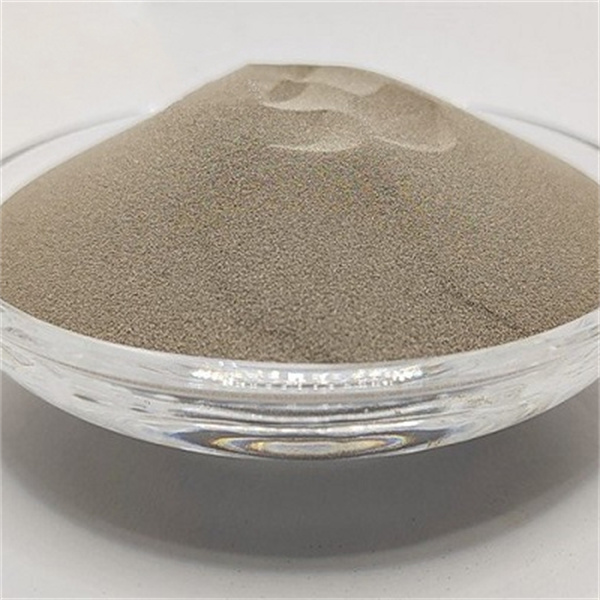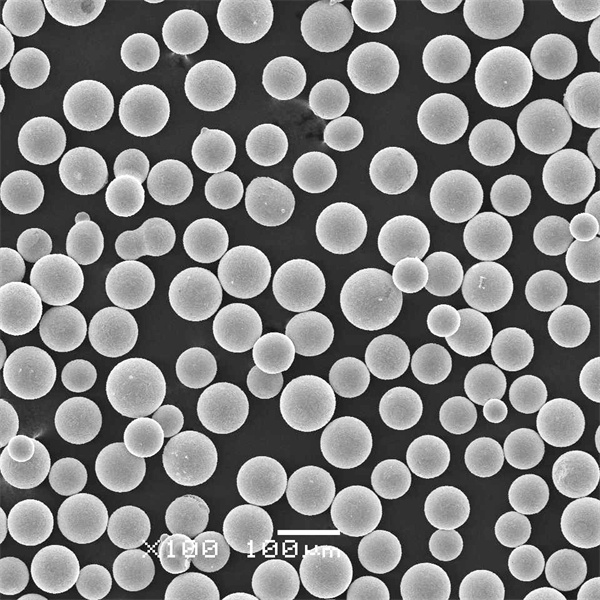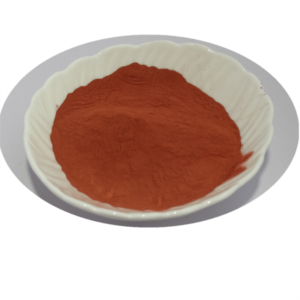Überblick über Wolfram-Metallpulver
Wolfram-Metallpulver ist ein feinkörniges Material, das hauptsächlich aus elementarem Wolfram besteht und in verschiedenen industriellen Anwendungen eingesetzt wird. Zu den wichtigsten Eigenschaften gehören extrem hohe Dichte, Festigkeit, Härte und hohe Temperaturbeständigkeit.
Zu den üblichen Anwendungen von Wolframpulver gehören:
- Wolframkarbid-Verbundwerkstoffe
- Schwere Wolframlegierungen
- Thermische Spritzschichten
- Additive Fertigung
- Elektrische Kontakte
- Strahlungsabschirmung
Wolfram gilt als kritischer Rohstoff aufgrund seiner einzigartigen Leistung in Verbindung mit einer prekären Versorgungslage. Lesen Sie weiter, um mehr über Spezifikationen, Verarbeitung, Preise und Verwendungsmöglichkeiten von Wolframpulver zu erfahren.

Materialarten von Wolfram-Metallpulver
Wolfram-Metallpulver gibt es in verschiedenen Grundzusammensetzungen:
| Typ | Typische Qualitäten | Zusammensetzung |
|---|---|---|
| Reines Wolfram | 99,9%, 99,99% Reinheit | Elementares Wolfram mit Verunreinigungsgrenzen |
| Oxid-disperses Wolfram | Y2O3-Zusätze | Wolfram mit 0,5-1% Yttriumoxid-Nanopartikeln |
| Dotiertes Wolfram | Lanthan oder andere Dotierstoffe | Wolfram mit zugesetzten Kornwachstumshemmern < 1% Niveau |
Tabelle 1: Gängige Materialkategorien für Wolfram-Metallpulver je nach Anwendungsbedarf
Spezielle Dotierstoffe oder Oxidzusätze tragen dazu bei, die Eigenschaften des Pulvers während der Konsolidierung zu Endverbraucherkomponenten und Teilen, die Stabilität bei hohen Temperaturen erfordern, anzupassen.
Wichtige Eigenschaften
| Eigentum | Typischer Wert | Bedeutung |
|---|---|---|
| Dichte | 19,3 g/cc | Hervorragende Masse- und Strahlungsabschirmung |
| Schmelzpunkt | 3410°C | Behält seine Festigkeit bei extremen Temperaturen, wo die meisten Metalle versagen |
| Endgültige Zugfestigkeit | 550-620 MPa | Relativ sprödes Material mit mäßiger Zugdehnbarkeit |
| Härte | HV 300-350 | Härter als Werkzeugstahl |
| Elastizitätsmodul | 350-410 GPa | Steif, resistent gegen Durchbiegung |
| Wärmeleitfähigkeit | 165 W/mK | Nützlich für Teile des Wärmemanagements, die bei hohen Temperaturen arbeiten |
Tabelle 2: Überblick über die mechanischen und physikalischen Eigenschaften von Wolfram-Metallpulver und verfestigten Legierungen
Die unübertroffene Temperaturbeständigkeit in Kombination mit der hohen Dichte fördert die Akzeptanz in anspruchsvollen Anwendungen in den Bereichen Energie, Luft- und Raumfahrt, Verteidigung und Elektronik.
Partikeleigenschaften von Wolfram-Metallpulver
Typische Morphologie von Wolframpulver:
| Parameter | Einzelheiten |
|---|---|
| Reinheit | 99,9% bis 99,999% verfügbar |
| Partikelform | Unregelmäßig, eckig |
| Größenverteilung | 1 bis 100 Mikrometer typisch |
| Sauerstoffgehalt | <100 ppm |
| Niveau des Oberflächenoxids | <50 nm Dicke |
Tabelle 3: Pulverqualitätsmetriken für Wolfram-Metallpulver, die in verschiedenen Konsolidierungsverfahren verwendet werden
Es muss darauf geachtet werden, dass bei der Handhabung des Pulvers keine Oxidation auftritt. Auf die endgültige Bauteildichte und Kornstruktur abgestimmte Chemikalien.
Fertigungsprozess
- Primäre Methoden zur Herstellung von Wolfram-Metallpulver:
- Wasserstoffreduktion (Wasserstoff wird zur Umwandlung von oxidischen Rohstoffen in Pulver verwendet)
- Thermit-Prozess Reduktion (Exotherme Oxid-Metall-Reaktionen erzeugen Pulver)
- Sekundäre mechanische Verfahren:
- Jet Milling (Zerkleinerung des Rohmaterials in feine Partikel durch Kollisionen)
- Verfahren mit rotierenden Elektroden (Elektrodenschleudern und Schmelzaufschluss)
- Typische Verfestigungstechniken für Pulverteile:
- Heiß-Isostatisches Pressen
- Sintern
- Additive Fertigung (SLM, EBM)
- Überlegungen zu Umwelt und Handhabung:
- Nominell inerte Lagerung <40°C unter Argon
- Handhabung des Handschuhfachs zur Vermeidung von Oxidation
Anwendungen von Wolfram-Metallpulver
Wichtige Verwendungszwecke von Wolfram-Metallpulver in verschiedenen Branchen:
| Segment | Anmeldung | Grund für die Verwendung |
|---|---|---|
| Industriell | Materialien aus Wolframkarbid | Extreme Härte und Zähigkeit für Zerspanungs- und Bergbauwerkzeuge |
| Verteidigung | Penetratoren mit kinetischer Energie | Hervorragende Dichteeigenschaften |
| Luft- und Raumfahrt | Düsen für Raketentriebwerke | Behält die Materialfestigkeit in extremen Umgebungen bei |
| Energie | Hitzeschilde, Komponenten für Plasmabrenner | Leistung bei hohen Temperaturen, wo Alternativen versagen |
| Elektronik | Elektrische Kontakte | Lichtbogenfestigkeit kombiniert mit Wärme-/Leitfähigkeitseigenschaften |
Tabelle 4: Überblick über die wichtigsten Anwendungsbereiche für Komponenten aus Wolframmetall in verschiedenen Branchen
Wolfram wird überall dort eingesetzt, wo Härte, Dichte, Zähigkeit und Festigkeit bei extremen Temperaturen oder Belastungen erforderlich sind.
Kostenanalyse
Typische Wolframpulverpreise:
| Parameter | Einzelheiten |
|---|---|
| Preis des Pulvers | $50 bis $350 pro kg |
| Konsolidierter Teilepreis | $100+ pro kg |
| Verarbeitung Ausbeute | 60-70% |
| Hauptlieferanten | China, Österreich, Portugal, USA, Russland andere Länder |
| Vorlaufzeiten | 6-12 Wochen häufig |
Tabelle 5: Einkaufsfaktoren einschließlich der Rohstoffkosten für Wolframprodukte
Die Verbraucher berichten von extremen Preisschwankungen, die die Haushaltsplanung auf dem Wolframmarkt erschweren. Etablierte Partnerschaften und Liefervereinbarungen mindern die Risiken.
Pro und Kontra
Vorteile
- Extrem hohe Dichte hilft bei der Strahlenabschirmung
- Behält seine Festigkeit bis über 3000°C bei, wo die meisten Metalle schmelzen
- Relativ neutrales Material vermeidet Kontamination
- Pulverform unterstützt komplexe Geometrien bei einigen AM-Verfahren
- Nach der Verfestigung der Teile ähnelt die Härte der von Werkzeugstahl
Benachteiligungen
- Spröde Eigenschaften bedeuten geringe Zugduktilität
- Es ist schwierig, Teile vollständig zu verdichten, ohne dass Nadellöcher und Hohlräume entstehen.
- Erfordert spezielle Kaltwand-Vakuumgeräte zum Schmelzen
- Risiko von Unterbrechungen der Lieferkette mit Auswirkungen auf die Verfügbarkeit
- Das Oxidationsrisiko erfordert eine kontrollierte Handhabung
- Sehr teuer im Vergleich zu Alternativen aus Stahl

FAQ
F: Welcher Partikelgrößenbereich ist typisch für Wolframpulver, das in verschiedenen Anwendungen eingesetzt wird?
A: Die meisten gängigen Größenverteilungen liegen zwischen 1-100 Mikron. Feinere Partikel lassen sich besser verpacken und unterstützen die vollständige Verdichtung, haben aber Probleme bei der Handhabung. Die Partikeltechnologie hängt von der Konsolidierungsmethode ab, wobei der AM-Bereich in der Regel 10-45 Mikrometer beträgt und bei Hartmetallverbundwerkstoffen bis zu Submikrometer-Pulver verwendet werden.
F: Welche Legierungselemente können in Wolframmetallpulver eingearbeitet werden?
A: Typische Legierungselemente wie Nickel, Eisen und Kupfer verschlechtern die Hochtemperaturleistung erheblich und werden daher nur selten hinzugefügt. Rhenium verbessert die Duktilität leicht. Oxidpartikel helfen, die Korngröße festzulegen. Dotierstoffe aus Seltenen Erden stabilisieren ebenfalls die Eigenschaften. Die Legierungsoptionen sind auf kleine Zusätze beschränkt, um die Reinheit zu erhalten.
F: Welche Vorsichtsmaßnahmen sind bei der Lagerung und Handhabung von Wolframpulvern zu beachten?
A: Wie andere luftempfindliche Materialien sollte Wolfram-Metallpulver unter 40 °C unter inertem Argongas aufbewahrt werden, um eine Oxidation durch Feuchtigkeit oder Sauerstoff zu verhindern. Handschuhfachprotokolle sind erforderlich, einschließlich Leckagekontrollen. Lassen Sie während der Handhabung keinen Kontakt mit organischen Stoffen zu, um Verunreinigungen oder Reaktionen zu vermeiden.
F: Ist Wolframpulver als Gefahrgut einzustufen und muss es speziell versandt werden?
A: Elementares Wolfram-Metallpulver ist harmlos und nicht reaktiv. Es eignet sich für den normalen Frachtversand in zugelassener Verpackung, ähnlich wie andere Industrierohstoffe. Im Gegensatz zu Hartmetallsorten mit kontrolliertem Kobaltgehalt, die als gefährliche Gemische gelten, ist keine besondere DG-Klassifizierung erforderlich.
F: Welche nachgelagerten Verfahren zur Herstellung von Teilen sind mit Wolframpulver-Rohstoffen kompatibel?
A: Durch heißisostatisches Pressen und Sintern werden standardmäßige konsolidierte Bauteile wie Gewichte oder Hitzeschilde hergestellt. Bei der additiven Fertigung durch Pulverbettschmelzen entstehen komplexe Geometrien, die auf andere Weise nicht zu erreichen sind. Pulver dienen auch als Ausgangsmaterial für thermische Spritzbeschichtungen, die eine Nachkonsolidierung erfordern.







